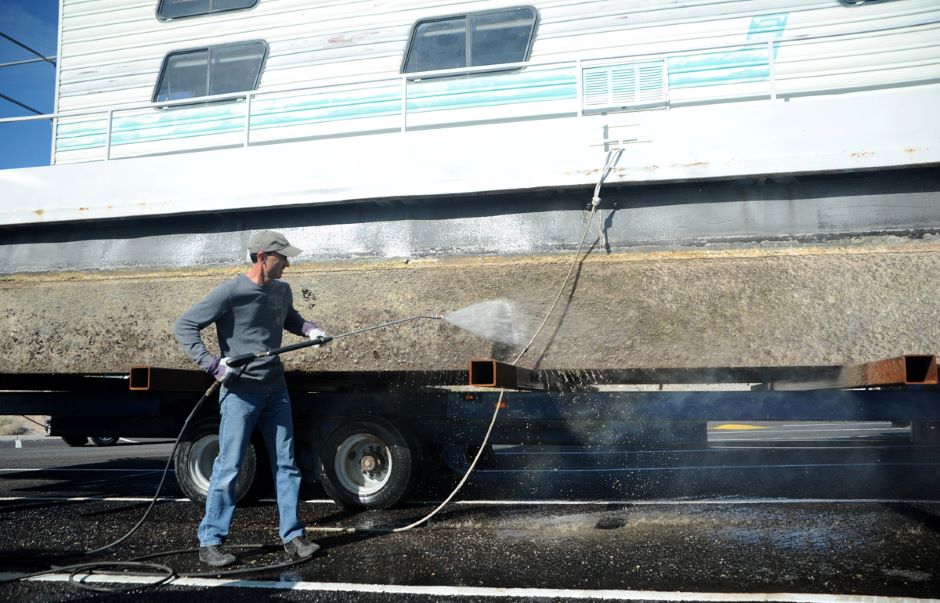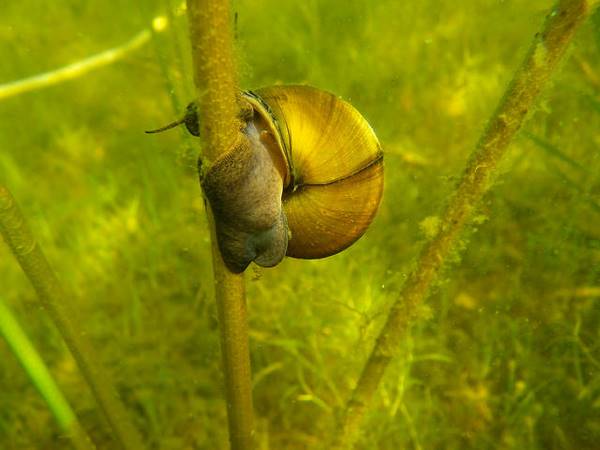How Boat Checks Play a Role in Aquatic Invasive Species Control
 Shawn Bagley, conservation officer, Utah Division of Wildlife Resources, removes quagga mussels from a boat during a Watercraft Inspection Training course at Lake Mead Nov. 14, 2012 (Credit: Lake Mead NRA Public Affairs, via Flickr CC BY-SA 2.0)
Shawn Bagley, conservation officer, Utah Division of Wildlife Resources, removes quagga mussels from a boat during a Watercraft Inspection Training course at Lake Mead Nov. 14, 2012 (Credit: Lake Mead NRA Public Affairs, via Flickr CC BY-SA 2.0)Anyone who studies aquatic invasive species (AIS) will say that one of the most common ways these invaders have been able to spread so rapidly and effectively has been improper boat maintenance. While natural travel patterns certainly show invasive species like Asian carp moving throughout the Great Lakes region after being intentionally introduced, there are also nuisances like the round goby, who were introduced to U.S. waterways by hitching a ride on a European ship. These invasives have the potential to upheave entire ecosystems and wreak havoc on delicately balanced fisheries. As a result, independent boat checks and mandatory watercraft inspection stations have become commonplace as the need to protect native resources grows.
Boat Checks and Decontamination
Tracking AIS that are spotted or have yet to make an appearance is standard for resource managers. However, even with close monitoring, invasives can be unintentionally smuggled into fisheries, wherein they are able to populate the waters and become much more difficult to handle. In order to prevent this, resource departments across the U.S. have set up boat check stations or established regulations for boaters to follow.
Regardless of the state, many of the regulations laid out for decontamination are similar. The U.S. Forest Service outlines the following as some primary guidelines to follow when performing a boat check and decontamination.
- Dispose of unused bait properly: Simply put, unused bait should be thrown away in a proper receptacle. Do not leave bait on the ground. Do not dump unused bait into any body of water.
- Drain all water from the vessel: “Drain all water from the bilge, motor well, water-holding compartments, and water-skiing ballast tanks and bladders.” This also includes water in the motor cooling system, if applicable. Mussels and smaller organisms can grow or be stored in these waters unintentionally.
- Inspect and clean the boat thoroughly between uses. Use touch and sight to identify any exterior hitchhikers. Juvenile mussels may not be visible but will feel like sandpaper, making a close examination even more necessary. If anything is found, be sure to properly remove all invasive species and report the occurrence to the appropriate invasive species departments, if applicable. Maine’s Department of Environmental Protection has videos demonstrating how to examine a vessel properly.
- Kill and dispose of any AIS found on the boat. Using 140 degrees Fahrenheit pressurized water, thoroughly clean every part of the boat, including equipment. The high-temperature water will kill all AIS and diseases that could potentially linger on the ship. Take this step slowly as this is not an instant solution and the idea, as stated by the U.S. Forest Service, is to “‘cook ‘em’ with heat and “remove ‘em’ with the pressurized water.” Equipment that can be removed should be soaked in 140 degrees Fahrenheit water to ensure the removal of all contaminants.
Conclusion
Depending on the state, watercraft checks may be more formal stations that those entering a waterway must go through or something recommended to anglers in order to protect native resources. In both cases, it is essential that sailors take care to follow all decontamination procedures to expedite the process and protect fisheries. The introduction of an invasive species can change the food web, ecosystem functions and even water chemistry. In the interest of protecting natural resources, sailors should take the initiative, whether required by law or not, to take the necessary steps to prevent the spread of AIS.



Pingback: FishSens Magazine | The Importance of Data-Informed Fishery Management - FishSens Magazine